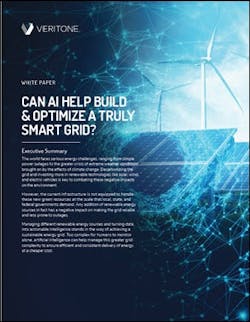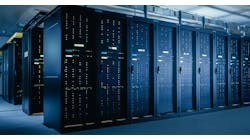As the country works to decarbonize the grid through the integration of renewable technologies such as wind, solar and even electric vehicles, there is still a major hurdle to overcome. The current grid infrastructure simply cannot handle the growing demand for electricity, according to a new white paper from Veritone.
“Aging grids and rising electricity demand combined with the challenge of delivering reliable power when managing a patchwork of intermittent energy sources encompasses the greatest hurdle to overcome,” the paper says.
One of the biggest aspects to address is the sheer volume of data being generated by these new, sometimes intermittent, distributed energy resources. According to the paper, collecting, analyzing and turning terabytes of data into actionable intelligence is simply not possible for humans alone.
As a result, Veritone notes that many grid operators are turning to distributed energy resource management systems (DERMS) to help manage the growing number of renewables and their associated data. This solution combines hardware and software to provide real-time communication and control across generation and storage assets, and it’s a good first step toward a smart grid. But the paper says DERMS has its limitations because “humans are ultimately responsible for collecting, processing and interpreting this information as grid conditions continuously evolve.”
When designed correctly into a green energy solution, AI can use iterative machine learning and neural network processing to spot historic and real-time patterns in large data sets. — Veritone, “Can AI Help Build and Optimize a Truly Smart Grid?“
As the grid becomes greener and more complex, DERMS alone won’t be sufficient. The key to creating a smart grid, according to the author, is the deployment of artificial intelligence.
The author explains that it’s AI’s predictive capabilities as well as its ability to act on those predictions — without human intervention — that set it apart from other solutions. “Instead, artificial intelligence autonomously and instantaneously balances the energy grid with virtually zero disruption in electricity delivery.”
The paper also explores how using AI-powered DERMS can “smooth” utility-scale solar production.
Download the report for free from the Microgrid Knowledge white paper library.








